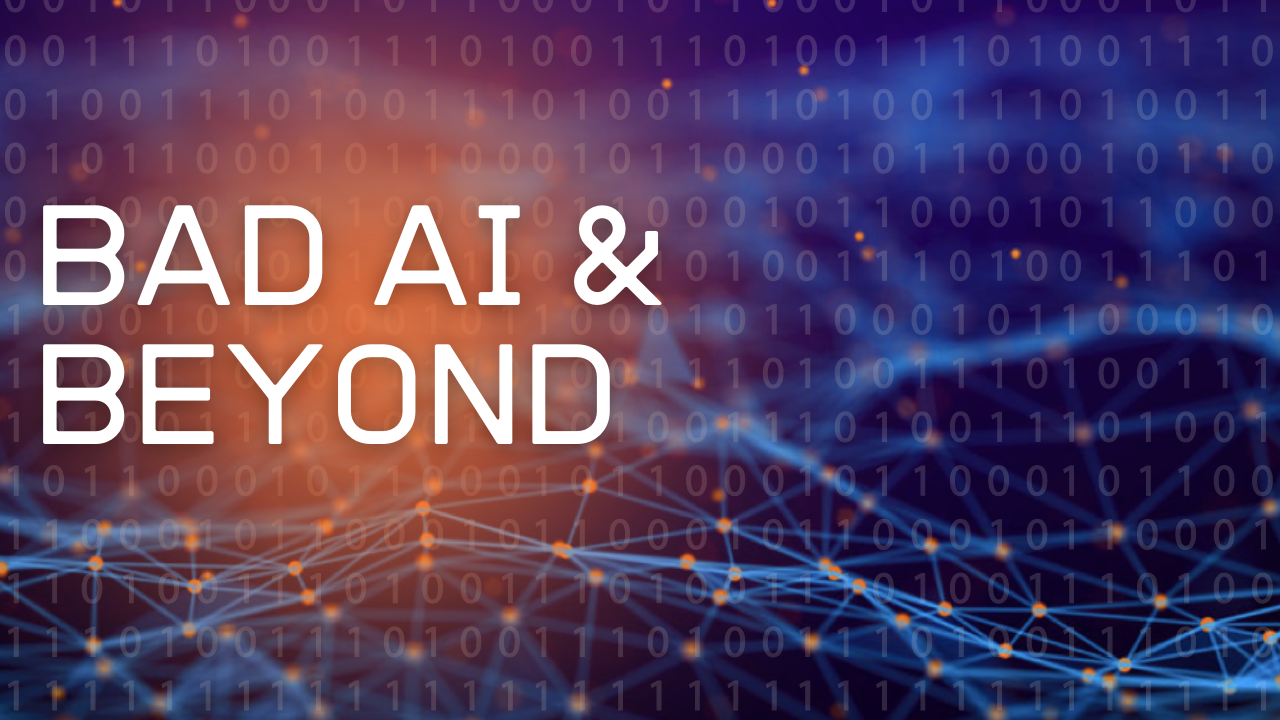How have media representations shaped public perceptions of artificial intelligence? How will a new generation of creative artists across media find innovative ways to represent AI and its impact on society?
Led by Samuel Baker, Associate Professor of English and Good Systems Executive Team Member; Suzanne Scott, Associate Professor of Radio-Television-Film; and Paul Toprac, Professor of Instruction in Computer Science, the Good Systems Texas Grand Challenge project Bad AI and Beyond brought together academics and industry experts in artificial intelligence, literature and media studies, game design, and more to research and discuss the representation of artificial intelligence (AI).
Our research questions included: What drives popular negativity about AI? Does the public have its reasons that the experts know not of? Or have the public adopted views of AI borne of misrepresentations? Do overtly dystopian representations of AI feed, or perhaps temper, public outrage about insidious issues with AI and machine learning such as the biases of search algorithms? Can we produce narratives on AI in different media modalities that are more nuanced and complex than just the false dichotomy of good and bad? Could a more accurately critical (and yet still exciting) model of AI themed entertainment be developed, once we’ve gained an understanding of how the public has been encountering AI?
We spent our project year first investigating how media representations shape public perceptions of artificial intelligence, and then using what we learned to explore how we might better represent everyday interactions with AI to the public. We began by developing lists, taxonomies, and case studies of popular representations of AI, as well as hypotheses about how the general public and elite groups discriminate between “good” and “bad” AI, and about how media representations shape these perceptions. We then tested these hypotheses in focus groups composed of UT community members with different levels of expertise in AI, and with a survey administered to a representative sample of the general public.
We shared our focus group and survey findings with undergraduate writers, filmmakers, and game designers, whom we challenged to use those findings, alongside other emergent research about AI, to craft novel representations of AI that go beyond dystopian clichés. This stage of our project culminated in the Bad AI and Beyond Festival in October 2020. This festival featured these students’ creations in multiple media, including, videos, written works, and a game, together with presentations of the insights gleaned from our focus group and survey research, and plenaries from science fiction luminaries Laeta Kalogridis and Bruce Sterling.
Next we came together with lead author Karim Nader to write and publish a paper in AI & Society on “Public Understanding of Artificial Intelligence through Entertainment Media.” Meanwhile, some of us hosted a follow-up conversation with Bruce Sterling, Simone Browne, and Nitin Verma, “”Autofac, Science Fiction and the Future of Work,” held under the auspices of the Beyond the Future of Work Pop-Up Institute convened by the Rapoport Foundation for Human Rights. Most recently, in 2022, project members Samuel Baker and Hannah Hopkins presented a related paper at the Science, Literature and the Arts Conference that we hope will develop into the next Bad AI and Beyond publication.
The Bad AI and Beyond Project has been sponsored by Good Systems, a UT Grand Challenge.



